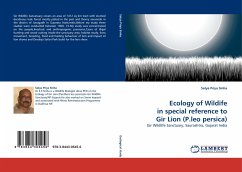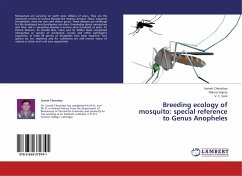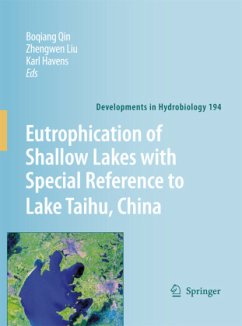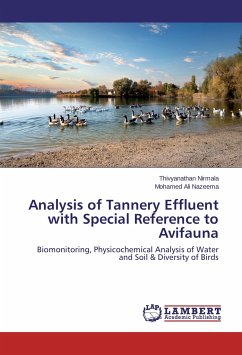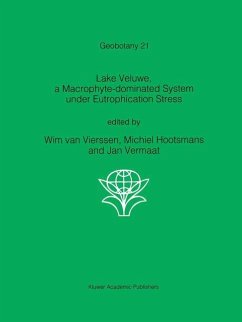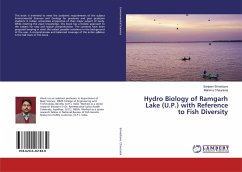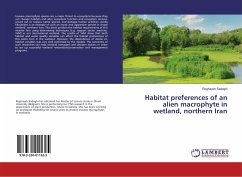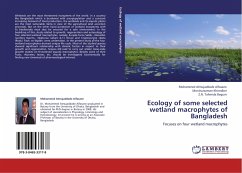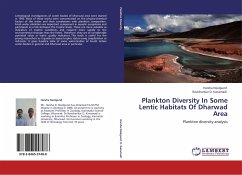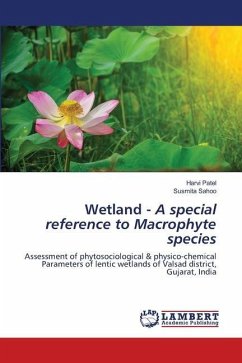
Wetland - A special reference to Macrophyte species
Assessment of phytosociological & physico-chemical Parameters of lentic wetlands of Valsad district, Gujarat, India
Versandkostenfrei!
Versandfertig in 6-10 Tagen
56,99 €
inkl. MwSt.

PAYBACK Punkte
28 °P sammeln!
Wetlands serve as the interface & ecotone habitat between the terrestrial & aquatic ecosystems, indicating that they are neither entirely aquatic nor terrestrial; depending on seasonal fluctuation. Wetlands are geologically young & ecologically delicate. They are natural water bodies and support a huge number of floral & faunal diversity. Wetlands are a highly adaptive, productive, & biologically rich ecosystem, that provides many significant private & public services to society. Wetlands are known as "Biological Supermarket", "Cradles of Biodiversity", "Kidney of Nature" & "Repository of Reso...
Wetlands serve as the interface & ecotone habitat between the terrestrial & aquatic ecosystems, indicating that they are neither entirely aquatic nor terrestrial; depending on seasonal fluctuation. Wetlands are geologically young & ecologically delicate. They are natural water bodies and support a huge number of floral & faunal diversity. Wetlands are a highly adaptive, productive, & biologically rich ecosystem, that provides many significant private & public services to society. Wetlands are known as "Biological Supermarket", "Cradles of Biodiversity", "Kidney of Nature" & "Repository of Resources" because they are multifaceted in many terms. In the wetland, macrophytes act as a link between the sediment, water, & atmosphere. They are large aquatic plants, including angiosperm, pteridophytes, bryophytes, & few macroalgae, which are self-supporting aquatic vascular plants that come from shallow water or which thrive in waterlogged or flooded sediments or soils. The distribution is dependent on the climatic, edaphic & hydric characteristics of the environment & ecological factors affect the associated macrophytes directly or indirectly.



